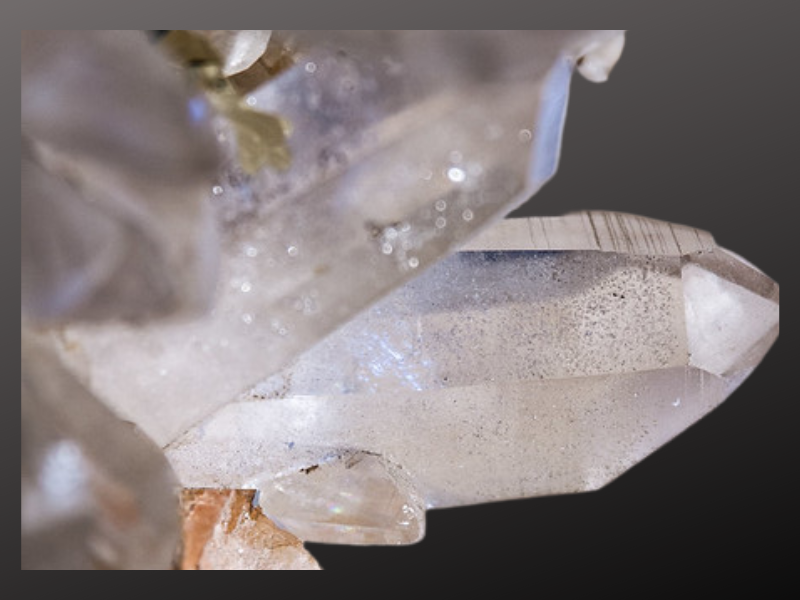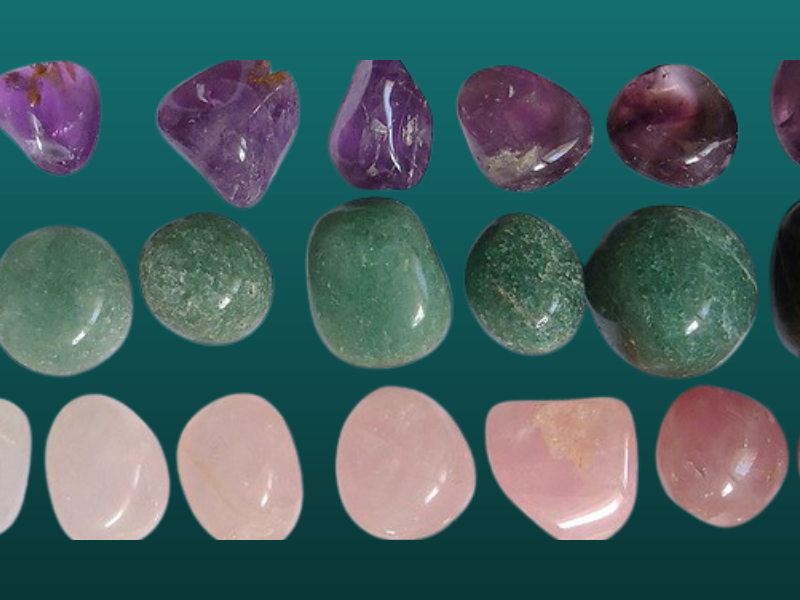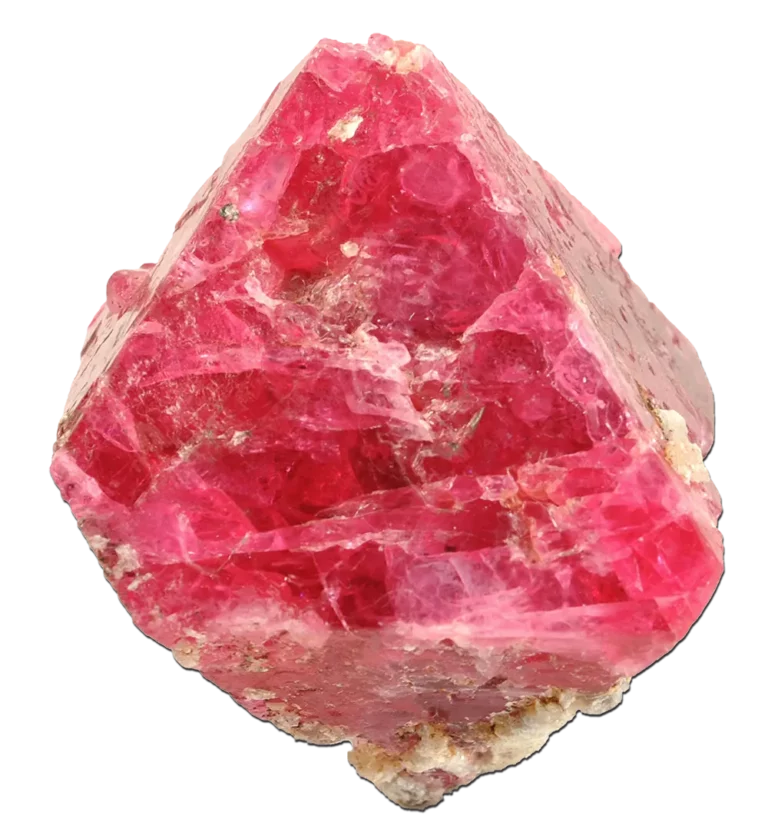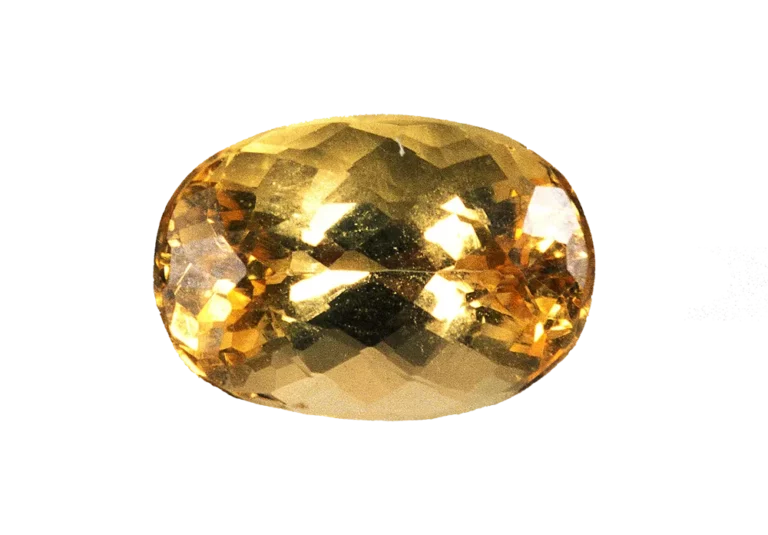Quartz: Properties, Benefits & Meanings

Quartz Overview
Quartz is the most common mineral found in the Earth’s crust. The mineral has a variety of colors, including clear, white, pink, purple, brown, and black, and can be found almost all over the globe. Quartz is a popular gemstone widely used in jewelry and decorative objects. Since the olden days, it has been used as a symbol of love, purity, and clarity. In addition, it is very durable compared to other minerals, making it useful in many industrial applications.
In this blog post, we will delve into the properties, benefits, and meanings of this gem, both physical and spiritual, so you can better understand this fascinating mineral.
What Is Quartz?
Quartz is a mineral of silicon and oxygen atoms arranged in a crystal lattice structure. It has a hardness of 7 on the Mohs scale; as such, it is the hardest mineral known to man. It is highly resistant to chemical weathering and has a high thermal conductivity, making it a valuable industrial material.
What makes this mineral so fascinating to gemstone lovers and spiritual seekers alike is its beautiful appearance and unique properties. It can come in various colors, shapes, and sizes, each with distinct properties and meanings. In addition, there are many varieties, each with unique beauty and benefits.
How is Quartz Formed?
Quartz is formed through the slow crystallization of magma, volcanic ash, or hydrothermal solutions. The process starts with silicon and oxygen compounds deposition in the Earth’s crust. Over time, these compounds form tiny crystals that gradually grow and interlock, forming a larger crystal structure.
The exact conditions under which this mineral is formed can vary depending on the type and location. For example, the clear type is often formed in igneous rocks or hydrothermal veins, while amethyst is in cavities within volcanic rocks. Smoky Quartz, conversely, is created through the natural irradiation of colorless crystals, which causes them to turn brown.
Formation of this mineral is a slow and intricate process that results in some of the most beautiful and valuable gemstones on Earth.
Physical Properties
| Mineral Group | Silicates |
| Formula | SiO2 |
| Chemical Name: | Silicon dioxide |
| Color | Clear, white, pink, purple, brown, black, and various other colors |
| Hardness (Mohs scale) | 7 |
| Refractive Index | 1.544 – 1.553 |
| Fracture | Conchoidal (curved, shell-like) |
| Luster | Vitreous (glassy) |
| Specific Gravity | 2.65 |
| Transparency | Transparent to translucent, with some varieties being opaque. |
Etymology
The word “quartz” comes from the German word “Quarz,” which in turn is derived from the Slavic word “twrdy” (meaning “hard”). The Slavic word was originally used to describe any hard mineral. Still, over time, it came to refer specifically to Quartz.
The word “quartz” has been used since the mid-18th century and has become the standard term for this mineral worldwide.

Where is Quartz Found?
Quartz can be found in many countries around the world, including:
- Afghanistan
- Argentina
- Australia
- Belgium
- Brazil
- Canada
- China
- France
- India
- Nepal
- Italy
- Madagascar
- Mexico
- Namibia
- Russia
- USA

Quartz Appearance
Quartz can come in a wide range of colors and forms, each with its unique appearance. It has a beautiful appearance that varies depending on the type and the impurities it contains. Clear Quartz, also known as rock crystal, is transparent and colorless, with a glassy luster. Rose quartz has a pale pink color and a cloudy or translucent appearance. The smoky type is brown to black and has a translucent to opaque appearance.
Amethyst has a purple color and can range from transparent to opaque. Citrine has a yellow to orange-brown color and a transparent to translucent appearance. In addition to these colors, it can also be found in various shades of white, pink, brown, gray, and black, depending on the impurities it contains.
Crystalline vs. Cryptocrystalline Quartz?
Crystalline Quartz is a type that forms in a crystal structure, meaning that its atoms are arranged in a repeating pattern. It is a common mineral on Earth. It can be found in various colors and forms, including clear, smoky, rose, and amethyst.
Cryptocrystalline Quartz has very small crystal structures that are not visible to the naked eye. This phenomenon contrasts crystalline, which has large crystal structures that can be seen with the naked eye. Therefore, Cryptocrystalline is also sometimes referred to as microcrystalline.
Some common examples of cryptocrystalline Quartz include chalcedony, agate, and jasper. These gemstones are typically opaque or translucent and can be found in various colors and patterns.
Varieties of Quartz
Quartz is a popular gemstone widely used in jewelry and decorative objects. It is a diverse mineral that comes in wide varieties and colors. Some of the most common types include:
- Clear Quartz: Also known as rock crystal, this is the most common type and is transparent and colorless.
- Rose Quartz: A pale pink variety that is often cloudy or translucent.
- Smoky Quartz: A brown to black variety often translucent to opaque.
- Amethyst: A purple variety that can range from transparent to opaque.
- Citrine: A yellow to the orange-brown variety that is transparent to translucent.
- Rutilated: A clear or smoky variety that contains needle-like inclusions of rutile, a mineral that can appear golden or silver.
- Tourmalinated: A clear or smoky type containing needle-like black tourmaline inclusions.
- Milky: A white or cloudy variety often used for carvings and ornaments.
- Phantom: A type that contains visible growth lines or layers, creating a phantom-like effect.
- 10. Tiger’s Eye: A yellow-brown to reddish-brown variety with a chatoyant (cat’s eye) effect.
Different types offer a range of colors and appearances, each with unique properties and meanings.

Quartz Value and Price
The value and price of Quartz can vary depending on several factors, including its type, color, clarity, cut, and carat weight.
Color is one of the most important factors affecting value. Clear and colorless samples are the most valuable, followed by pink and purple varieties like rose and amethyst. Yellow to brown, such as citrine and smoky Quartz, are generally less valuable.
Clarity is also important, as samples with fewer inclusions have more value than those with many inclusions or blemishes. Inclusions can include fractures, bubbles, and other imperfections affecting the stone’s transparency and appearance.
Cut is another important factor affecting the value. A well-cut gemstone will have good proportions, symmetry, and polish, enhancing its beauty and value. It can be cut into many different shapes, including round, oval, pear, and emerald cuts.
Carat weight The value is affected by carat weight and clarity, with larger stones valued higher than smaller ones of equal quality.
Other factors that can affect the value include:
- The rarity of the stone.
- The quality of the mining location.
- The quality of the lapidary work that goes into cutting and polishing the stone.
The value depends on several factors. The prices can vary widely depending on the specific stone and market conditions.
How Can You Tell if Quartz Is Real?
There are several tests you can perform to help determine if a quartz gemstone is real or fake. Here are some common methods to verify the authenticity:
- Visual inspection: A real piece should have a consistent color and texture throughout the stone. Look for any air bubbles or other inclusions that could be a sign of a fake.
- Scratch test: It is a hard mineral and can scratch glass, but it cannot be scratched by steel or iron. It is likely real if you scratch a piece of glass with the Quartz, and it leaves a mark.
- Water test: Drop the sample into a glass of water. It should sink to the bottom if it is real.
- UV light test: Some fake pieces may fluoresce under UV light, while real ones do not. Shine a UV light on the stone to see if it glows.
- Heating test: The real piece is generally resistant to heat, so you can try heating the stone with a lighter or other heat sources. If it is real, it should not melt or change color significantly.
- Conductivity test: Some types of the fake may conduct electricity, while real ones do not. You can test this by placing the stone between two electrodes and checking for conductivity.
While these tests can help determine if a sample gemstone is real or fake, it’s always best to have the stone evaluated by a professional gemologist or jeweler.
What Does Quartz Symbolize?
Quartz is a gemstone that is associated with a variety of symbolic meanings and spiritual properties. Here are some of the most common:
- Clarity of Mind: The gemstone is often associated with clarity of thought and communication. It is believed to clear the mind and enhance focus, making it easier to make decisions and communicate clearly with others.
- Healing Properties: It is believed to have healing properties and is often used in alternative medicine practices like crystal healing. It is said to help balance and energize the body and promote overall physical and emotional wellness.
- Amplification of Energy: It is also known for amplifying energy and intention. It is commonly used in meditation and spiritual practices to help enhance the power of other stones or rituals.
- Protection: The stone is sometimes used for protection against negative energy and psychic attacks. It is believed to create a shield of light around the wearer or user, helping to ward off negative energy and promoting a sense of safety and security.
- Spirituality: It is often associated with spiritual awakening and growth. It is said to help open the mind and spirit to new experiences and perspectives. It also promotes a sense of connection to the divine or higher self.
The symbolism and meaning may vary depending on the culture and tradition. Still, it is regarded as a symbol of clarity, healing, and spiritual growth.

Uses of Quartz
Quartz is a versatile gemstone that has many practical and decorative uses. Some of the most common uses are:
- Jewelry: It is often used in jewelry as a standalone gemstone or as part of a larger piece. It is valued for its clarity, durability, and range of colors. It is often cut and polished into various shapes and sizes.
- Industrial applications: It is a common mineral in many industrial applications due to its hardness, durability, and ability to withstand high temperatures. It is used in manufacturing electronics, optics, ceramics, and semiconductors.
- Home decor: It is often used in home decor, particularly countertops, and flooring. It is valued for its durability, resistance to staining and scratching, and range of colors and patterns.
- Healing and spiritual practices: It is often used in alternative medicine practices like crystal healing, where it is believed to have healing and balancing properties. It is also used in meditation and spiritual practices to enhance focus, promote spiritual growth, and amplify energy.
- Geological studies: It is an important mineral in geological studies. It can provide clues about the Earth’s history and geologic events. It is often used in studies of mineral deposits, rock formations, and other geological features.
The stone has many practical and decorative uses. Its beauty, durability, and range of colors and patterns make it popular for use in jewelry and home decor. In addition, its unique properties make it useful in various industrial and scientific applications.
Is Quartz a birthstone?
Quartz is not a specific birthstone, but it is a mineral that can come in various colors, such as amethyst, citrine, and rose quartz. These colored varieties of quartz have been assigned as birthstones for certain months. For example, amethyst is the February birthstone and citrine is the November birthstone.
Additionally, clear quartz or rock crystal is known as the Master Healer stone and it has a range of metaphysical properties associated with it. While Quartz may not be a traditional birthstone in its natural form, many of its colorful varieties are recognized as such.

How To Take Care Of Quartz Jewelry?
How To Take Care Of Quartz Jewelry?
Quartz is a durable gemstone that is easy to care for and maintain. Following are some useful tips on how to take care of your jewelry:
- Avoid exposure to harsh chemicals: It is resistant to many chemicals but can be damaged by exposure to harsh chemicals like bleach or ammonia. Avoid wearing your jewelry when cleaning with these chemicals, and store it away from them.
- Clean regularly: To maintain it well, clean it regularly with a soft cloth, mild soap, and water. Avoid abrasive cleaners and chemicals, which can damage the stone’s surface.
- Store properly: Store your jewelry in a box and soft cloth to protect it from scratches. Avoid storing it with other jewelry items that could scratch or damage the stone.
- Protect from high heat: The gemstone can be damaged by exposure to high heat, so avoid wearing it when using hot tools like hair dryers or curling irons. Also, avoid leaving it in direct sunlight or a hot car.
- Handle carefully: A durable gemstone can still be chipped or damaged if handled roughly. Be careful when putting on or removing your jewelry, and avoid dropping it or knocking it against hard surfaces.
These simple tips can help keep your jewelry looking beautiful and in good condition if you follow them.
FAQ
Is Quartz a valuable gemstone?
It can be a valuable gemstone, especially if it is of high quality, large, or rare color. However, it can also be relatively affordable, depending on the type and quality.
Can Quartz be used in engagement rings?
It can be used in engagement rings. However, it is not as durable as other gemstones like diamonds or sapphires, so it may not be the best choice for everyday wear.
Can Quartz be repaired if it is chipped or scratched?
It can be repaired if it is chipped or scratched. Of course, the kind of repair will depend on the extent of the damage. Still, a professional jeweler should be able to fix most issues.
Is Quartz a natural or lab-created gemstone?
It can be found in nature and created in a laboratory. Lab-created is often used in industrial applications, while natural is more commonly used in jewelry and decorative objects.
Can Quartz be used for meditation or healing purposes?
It is often used in practices like crystal healing for meditation and healing. It is believed to have various spiritual and healing properties and can be used to balance energy and promote wellness.
Does the color of Quartz affect its value?
The color can affect its value. Some colors, like amethyst or citrine, are rare and more valuable than others. At the same time, clear or milky Quartz may be more affordable. The color’s quality and the stone’s clarity will also affect its value.







